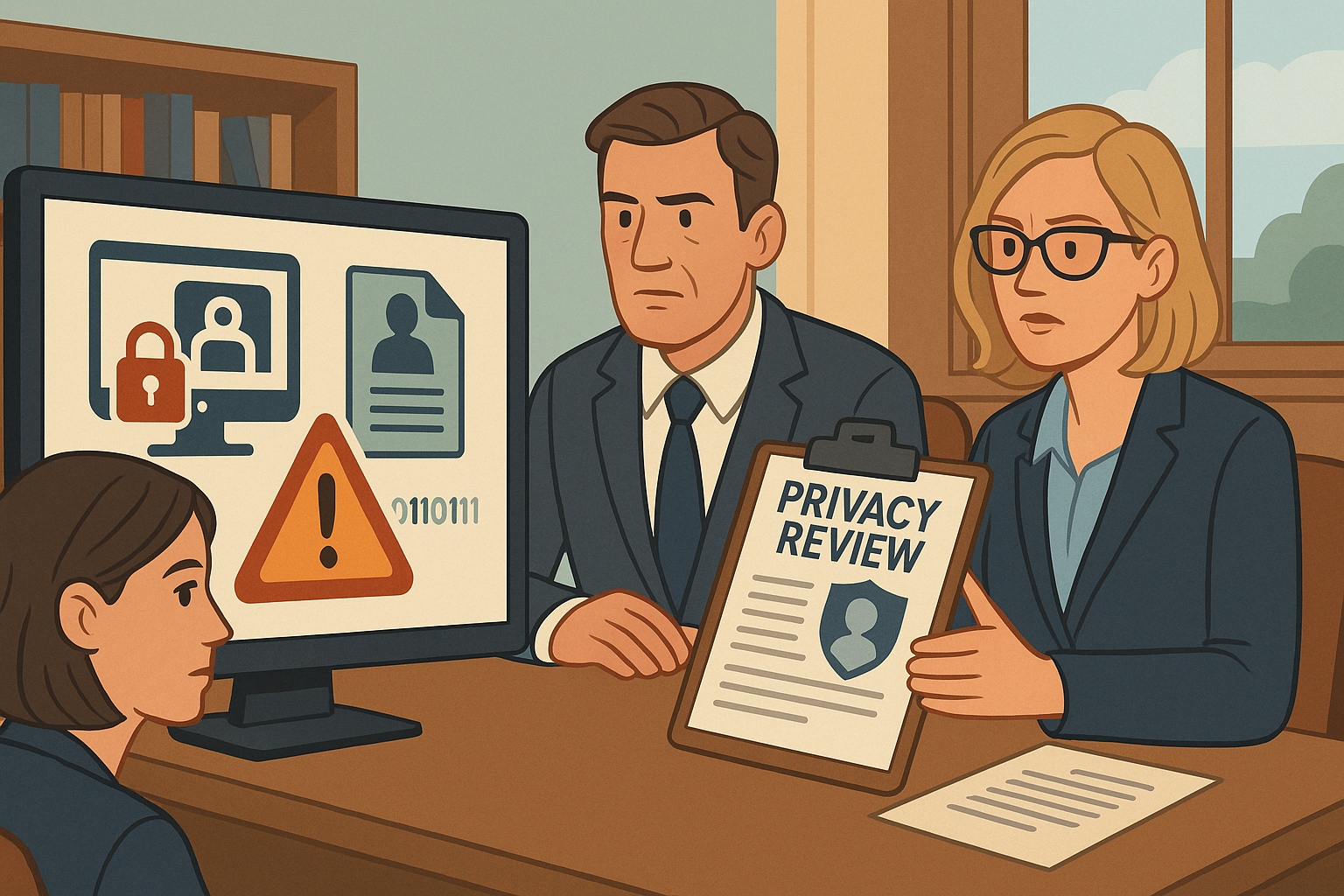Province-Wide Data-Disclosure Incident at Student-Info Vendor Prompts Privacy Review Across School Boards
The Challenge
When several school boards across the province received an urgent notice from Edulogic Systems, their contracted student information management vendor, the message was brief but alarming: a configuration error had exposed portions of student data to unauthorized third parties for an unknown period.
The breach came to light when a parent, attempting to access their child’s school records through an online portal, inadvertently viewed another student’s transcript. Within days, local media reported that the exposure potentially affected tens of thousands of students across multiple jurisdictions, from elementary to secondary levels.
The disclosed information included students’ names, grades, attendance records, and, in some cases, medical accommodations and individualized learning plans. Although the vendor maintained that no financial data was compromised, the inclusion of sensitive educational and health-related details raised immediate concerns among privacy officers and administrators.
Under PIPEDA and provincial education privacy laws, school boards are classified as data controllers and are responsible for ensuring that third-party service providers maintain adequate safeguards. The revelation that Edulogic had failed to enforce access restrictions and conduct regular vulnerability assessments exposed significant weaknesses in vendor management and privacy governance.
In the days that followed, superintendents faced mounting public scrutiny. Parents demanded transparency, while advocacy groups questioned the increasing reliance on cloud-based record systems without sufficient oversight. The provincial Ministry of Education initiated a formal review into how school boards assess the privacy and security posture of their contracted technology vendors.
The incident also revealed broader governance challenges. Each school board maintained slightly different contractual and technical arrangements with the vendor, resulting in inconsistent privacy clauses and audit requirements. Privacy officers across districts expressed uncertainty about accountability boundaries: whether responsibility lay with the vendor, the ministry, or the individual boards.
Further investigation revealed that the exposure had persisted for nearly three months before being detected. During that time, access logs showed evidence of data queries originating from outside Canada, raising the possibility of cross-border data exposure—a serious compliance issue under PIPEDA’s data transfer provisions.
The consequences were immediate and far-reaching. Reputational damage to the school boards eroded community trust, and the vendor’s contracts were suspended pending independent audits. Administrative operations that relied on digital systems were disrupted, forcing educators to revert to manual record-keeping. While no confirmed misuse of the data had yet been discovered, the risk of identity fraud and reputational harm to affected students prompted a province-wide review of data protection standards.
The incident underscored a critical gap in oversight. In the interconnected education ecosystem, a single vendor’s misstep had placed the privacy of an entire generation of students at risk.
Our Solution
Service Provided: Privacy and Data Protection (Third-Party Incident Response and Program Strengthening) We led a coordinated, province-wide privacy and cybersecurity response that included containment, investigation, compliance reporting, and long-term governance improvements.
- Containment and Forensics: We isolated all affected systems, revoked vendor credentials, implemented temporary least-privilege roles, and secured forensic evidence such as logs and configuration files. A targeted forensic review confirmed the nature, duration, and scope of the data exposure.
- Regulatory and Stakeholder Management: We prepared compliant reports for federal and provincial privacy regulators and developed clear, accessible communications for parents and guardians. We also coordinated with the Ministry of Education’s privacy office to maintain transparency throughout the process.
- Vendor Risk and Contract Management: Our team triggered right-to-audit clauses, required a corrective action plan, and oversaw independent assurance testing under SOC 2 and ISO 27001 frameworks. We updated all Data Processing Agreements (DPAs) to strengthen data residency, incident reporting, and subcontractor disclosure requirements.
- Technical Hardening: We implemented stronger access controls, enforced multi-factor authentication for all privileged accounts, expanded audit logging, and introduced field-level redaction for sensitive student information.
- Program Standardization: We developed a standardized privacy control framework and consistent contractual language for all school boards. Regular tabletop exercises and vendor review cycles were established to improve readiness and accountability.
The Value
- Reduced Risk Exposure: High-risk, over-permissioned accounts and service tokens were reduced by 85% within the first month. All privileged accounts were secured with multi-factor authentication.
- Improved Detection and Response: The average time to detect portal misconfigurations decreased from 90 days to less than two weeks, supported by enhanced logging and weekly configuration reviews.
- Regulatory Confidence: Initial follow-up assessments from regulators confirmed full compliance, and standardized communications reduced incident response drafting time by approximately 60%.
- Operational Continuity: Secure digital record access was restored within six weeks, reducing manual administrative work by 70%.
- Governance Alignment: All participating school boards adopted a unified third-party risk management framework, allowing consistent auditing and improved visibility across the province.
Implementation Roadmap
Week 0–1: Containment and Triage Week 1–2: Assessment and Notification Week 2–4: Remediation and Assurance Week 4–8: Program Standardization Week 8–12: Optimization and Handover
- Disable compromised portals and revoke vendor access.
- Capture and preserve evidence, including audit logs and configuration data.
- Establish an incident command structure and communication protocol.
- Complete a targeted Privacy Impact Assessment focused on third-party controls and cross-border data handling.
- Categorize affected individuals and issue regulator and parental notifications.
- Coordinate with vendors and hosting providers to assess residual risk.
- Implement updated access controls and monitoring tools.
- Launch independent SOC 2 and ISO 27001 validation of vendor controls.
- Introduce field-level encryption and redaction of sensitive data fields.
- Finalize a standardized control and contract framework for all participating school boards.
- Conduct staff training and third-party incident simulation exercises.
- Establish continuous monitoring through quarterly risk reviews and annual penetration testing.
- Deliver a metrics dashboard tracking anomalies, response time, and vendor assurance status.
- Transition to steady-state governance and long-term oversight.
Infosheet / Tags


